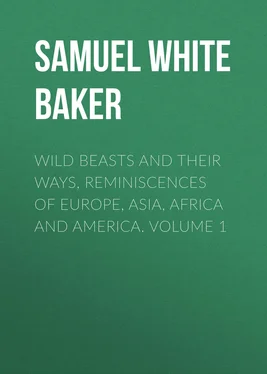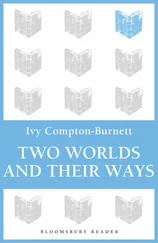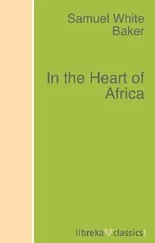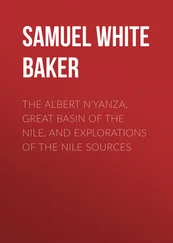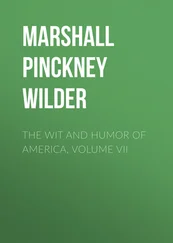Samuel White Baker - Wild Beasts and Their Ways, Reminiscences of Europe, Asia, Africa and America. Volume 1
Здесь есть возможность читать онлайн «Samuel White Baker - Wild Beasts and Their Ways, Reminiscences of Europe, Asia, Africa and America. Volume 1» — ознакомительный отрывок электронной книги совершенно бесплатно, а после прочтения отрывка купить полную версию. В некоторых случаях можно слушать аудио, скачать через торрент в формате fb2 и присутствует краткое содержание. Жанр: Путешествия и география, История, foreign_edu, foreign_antique, foreign_prose, на английском языке. Описание произведения, (предисловие) а так же отзывы посетителей доступны на портале библиотеки ЛибКат.
- Название:Wild Beasts and Their Ways, Reminiscences of Europe, Asia, Africa and America. Volume 1
- Автор:
- Жанр:
- Год:неизвестен
- ISBN:нет данных
- Рейтинг книги:3 / 5. Голосов: 1
-
Избранное:Добавить в избранное
- Отзывы:
-
Ваша оценка:
- 60
- 1
- 2
- 3
- 4
- 5
Wild Beasts and Their Ways, Reminiscences of Europe, Asia, Africa and America. Volume 1: краткое содержание, описание и аннотация
Предлагаем к чтению аннотацию, описание, краткое содержание или предисловие (зависит от того, что написал сам автор книги «Wild Beasts and Their Ways, Reminiscences of Europe, Asia, Africa and America. Volume 1»). Если вы не нашли необходимую информацию о книге — напишите в комментариях, мы постараемся отыскать её.
Wild Beasts and Their Ways, Reminiscences of Europe, Asia, Africa and America. Volume 1 — читать онлайн ознакомительный отрывок
Ниже представлен текст книги, разбитый по страницам. Система сохранения места последней прочитанной страницы, позволяет с удобством читать онлайн бесплатно книгу «Wild Beasts and Their Ways, Reminiscences of Europe, Asia, Africa and America. Volume 1», без необходимости каждый раз заново искать на чём Вы остановились. Поставьте закладку, и сможете в любой момент перейти на страницу, на которой закончили чтение.
Интервал:
Закладка:
'577 6 1/2 drams 4 bore 14 drams Elephants. '500 5 1/2 " 8 " 14 " Rhinoceros. '450 5 " 10 " 12 " Buffaloes. '400 4 " 12 " 10 " '360 Toys. '295 Toys.
The two latter rifles, '360 and '295, are charming additions, and although capable of killing deer are only to be recommended as companions for a stroll but not to be classed as sporting rifles for ordinary game. They are marvellously accurate, and afford great satisfaction for shooting small animals and birds. The '360 may be used for shooting black-buck, but I should not recommend it if the hunter possesses a '400.
It would be impossible to offer advice that would suit all persons. I can therefore only give a person opinion according to my own experience.
For all animals above the size of a fallow deer and below that of a buffalo I prefer the '577 solid Express—648 grains solid bullet,—6 drams powder not 6 1/2, as the charge of only 6 drams produces greater accuracy at long ranges.
The weight of this rifle should be 11 1/2 lbs., or not exceeding 12 lbs. For smaller game, from fallow deer downwards, I prefer the '400 Express with a charge of from 85 grains to 4 drams of powder—solid bullet, excepting the case of black-buck, where, on account of numerous villages on the plains, it is necessary that the bullet should not pass through the body. The important question of weight is much in favour of the '400, as great power and velocity are obtained by a weapon of only 8 1/2 lbs.
I should therefore limit my battery to one '577, one '400, and one Paradox No. 12, for ordinary game in India, as elephants and other of the larger animals require special outfit. The Paradox*, invented by Colonel Fosberry and manufactured by Messrs. Holland and Holland of Bond Street, is a most useful weapon, as it combines the shot-gun with a rifle that is wonderfully accurate within a range of 100 yards. (* Since this was written Messrs. Holland have succeeded after lengthened experiments in producing a Paradox No. 8, which burns 10 drams of powder, and carries a very heavy bullet with extreme accuracy. This will be a new departure in weapons for heavy game.)
It is a smooth-bore slightly choked, but severely rifled for only 1 1/2 inch in length from the muzzle. This gives the spin to the projectile sufficient to ensure accuracy at the distance mentioned.
The No. 12 Paradox weighs 84 lbs. and carries a bullet of 1 3/4 ounce with 4 1/2 drams of powder. Although the powder charge is not sufficient to produce a high express velocity, the penetration and shock are most formidable, as the bullet is of hardened metal, and it retains its figure even after striking a tough hide and bones. The advantage of such a gun is obvious, as it enables a charge of buck-shot to be carried in the left barrel, while the right is loaded with a heavy bullet that is an admirable bone-smasher; it also supersedes the necessity of an extra gun for small game, as it shoots No. 6 shot with equal pattern to the best cylinder-bored gun.
There are many persons who prefer a '500 or a '450 Express to the '577 or the '400. I have nothing to say against them, but I prefer those I have named, as the '577 is the most fatal weapon that I have ever used, and with 6 or 6 1/2 drams of powder it is quite equal to any animal in creation, provided the shot is behind the shoulder. This provision explains my reason for insisting that all animals from a buffalo upwards should be placed in a separate category, as it is frequently impossible to obtain a shoulder shot, therefore the rifles for exceedingly heavy game must be specially adapted for the work required, so as to command them in every conceivable position.
I have shot with every size of rifle from a half pounder explosive shell, and I do not think any larger bore is actually necessary than a No. 8, with a charge of 12 or 14 drams of powder. Such a rifle should weigh 15 lbs., and the projectile would weigh 3 ounces of hardened metal.
The rifles that I have enumerated would be always double, but should the elephant-hunter desire anything more formidable, I should recommend a single barrel of 36 inches in length of bore, weighing 22 lbs., and sighted most accurately to 400 yards. Such a weapon could be used by a powerful man from the shoulder at the close range of fifty yards, or it could be fired at long ranges upon a pivot rest, which would enable the elephant-hunter to kill at a great distance by the shoulder shot when the animals were in deep marshes or on the opposite side of a river. I have frequently seen elephants in such positions when it was impossible to approach within reasonable range. A rifle of this description would carry a half-pound shell with an exploding charge of half an ounce of fine grain powder and the propelling charge would be 16 drams. I had a rifle that carried a similar charge, but unfortunately it was too short, and was only sighted for 100 yards. Such a weapon can hardly be classed among sporting rifles, but it would be a useful adjunct to the battery of a professional hunter in Africa.
There can be little doubt that a man should not be overweighted, but that every person should be armed in proportion to his physical strength. If he is too light for a very heavy rifle he must select a smaller bore; if he is afraid of a No. 8 with 14 drams, he must be content with a No. 12 and 10 drams, but although he may be successful with the lighter weapon, he must not expect the performance will equal that of the superior power.
It may therefore be concluded that for a man of ordinary strength, the battery for the heaviest game should be a pair of double No. 8 rifles weighing 14 or 15 lbs. to burn from 12 to 14 drams of powder, with a hardened bullet of 3 ounces. Such a rifle will break the bones of any animal from an elephant downwards, and would rake a buffalo from end to end, which is a matter of great importance when the beast is charging.
Although the rifle is now thoroughly appreciated, and sportsmen of experience have accepted the Express as embodying the correct principle of high velocity, I differ with many persons of great authority in the quality of projectiles, which require as much consideration as the pattern of the gun.
The Express rifle is a term signifying velocity, and this is generally accompanied by a hollow bullet which is intended to serve two purposes— to lighten the bullet, and therefore to reduce the work of the powder, and to secure an expansion and smash-up of the lead upon impact with the animal. I contend that the smashing up of the bullet is a mistake, excepting in certain cases such as I have already mentioned, where the animal is small and harmless like the black-buck, which inhabits level plains in the vicinity of population, and where the bullet would be exceedingly dangerous should it pass through the antelope and ricochet into some unlucky village.
As I have already advised the purchaser of a rifle to consider the purpose for which he requires the weapon, in like manner I would suggest that he should reflect upon the special purpose for which he requires the bullet. He should ask himself the questions—"What is a bullet?" and "What is the duty of a bullet?"
A bullet is generally supposed to be a projectile capable of retaining its component parts in their integrity. The duty of the bullet is to preserve its direct course; it should possess a power of great penetration, should not be easily deflected, and together with penetrating power it should produce a stunning effect by an overpowering striking energy.
How are we to combine these qualities? If the projectile has great penetrating force it will pass completely through an animal, and the striking energy will be diminished, as the force that should have been expended upon the body is expending itself in propelling the bullet after it has passed through the body. This must be wrong, as it is self-evident that the striking energy or knock-down blow must depend upon the resistance which the body offers to the projectile. If the bullet remains within it, the striking energy; complete and entire, without any waste whatever, remains within the body struck. If, therefore, a bullet '577 of 648 grains propelled by 6 drams of powder has at fifty yards a striking energy of 3500 foot pounds, that force is expended upon the object struck,—provided it is stopped by the opposing body.
Читать дальшеИнтервал:
Закладка:
Похожие книги на «Wild Beasts and Their Ways, Reminiscences of Europe, Asia, Africa and America. Volume 1»
Представляем Вашему вниманию похожие книги на «Wild Beasts and Their Ways, Reminiscences of Europe, Asia, Africa and America. Volume 1» списком для выбора. Мы отобрали схожую по названию и смыслу литературу в надежде предоставить читателям больше вариантов отыскать новые, интересные, ещё непрочитанные произведения.
Обсуждение, отзывы о книге «Wild Beasts and Their Ways, Reminiscences of Europe, Asia, Africa and America. Volume 1» и просто собственные мнения читателей. Оставьте ваши комментарии, напишите, что Вы думаете о произведении, его смысле или главных героях. Укажите что конкретно понравилось, а что нет, и почему Вы так считаете.
